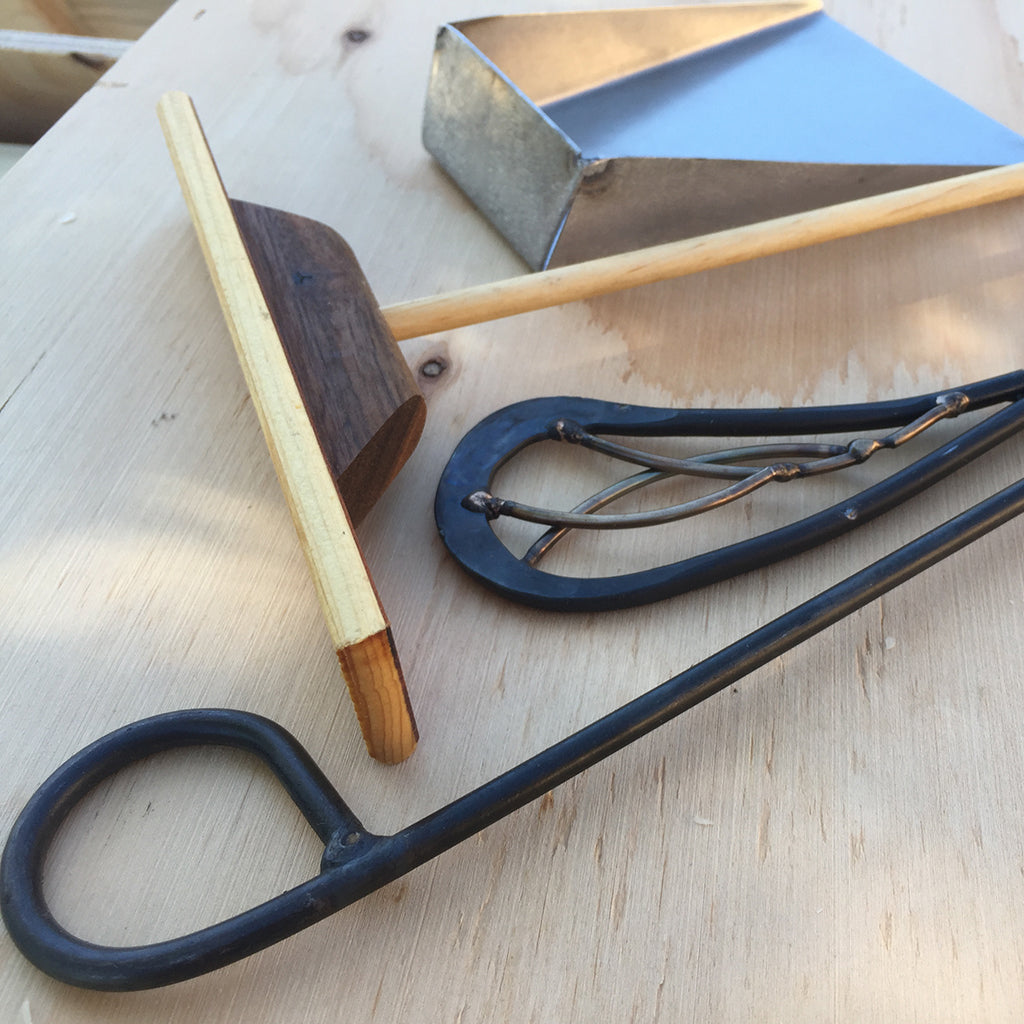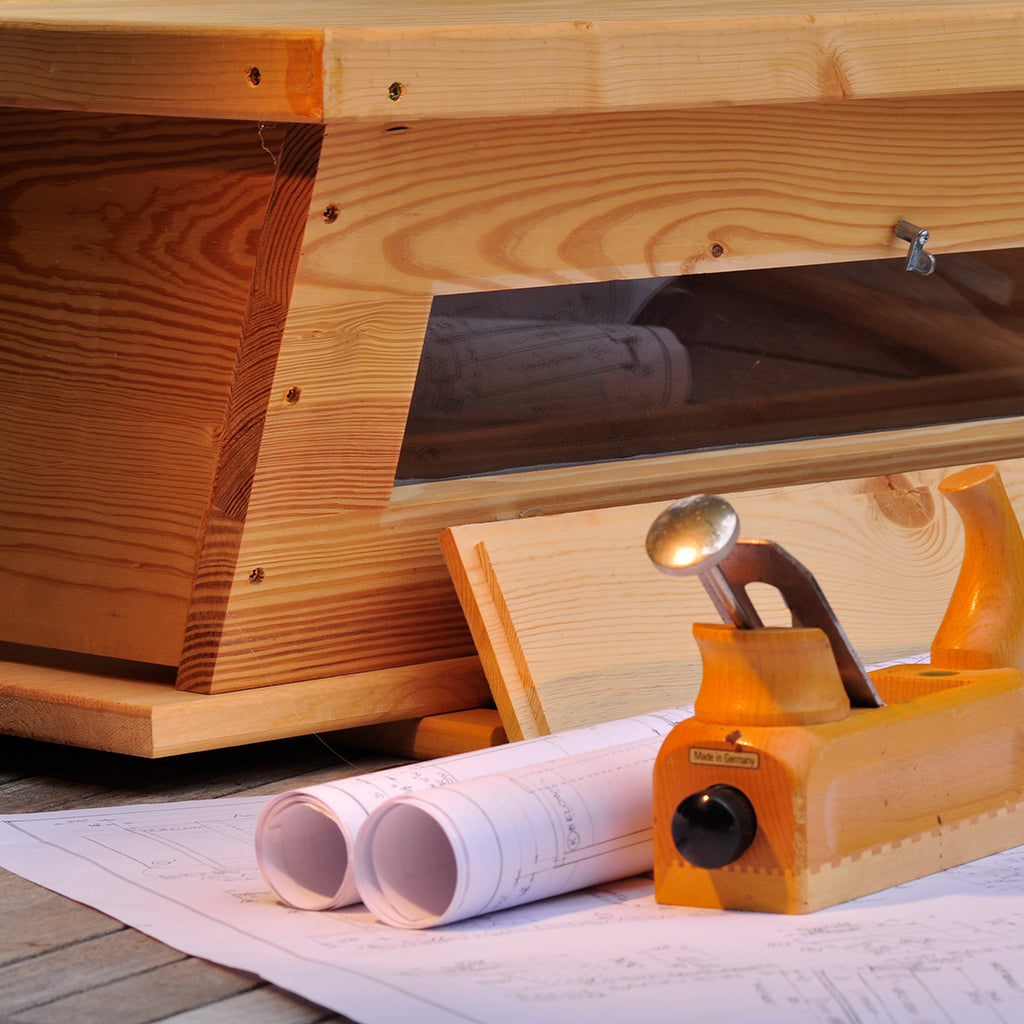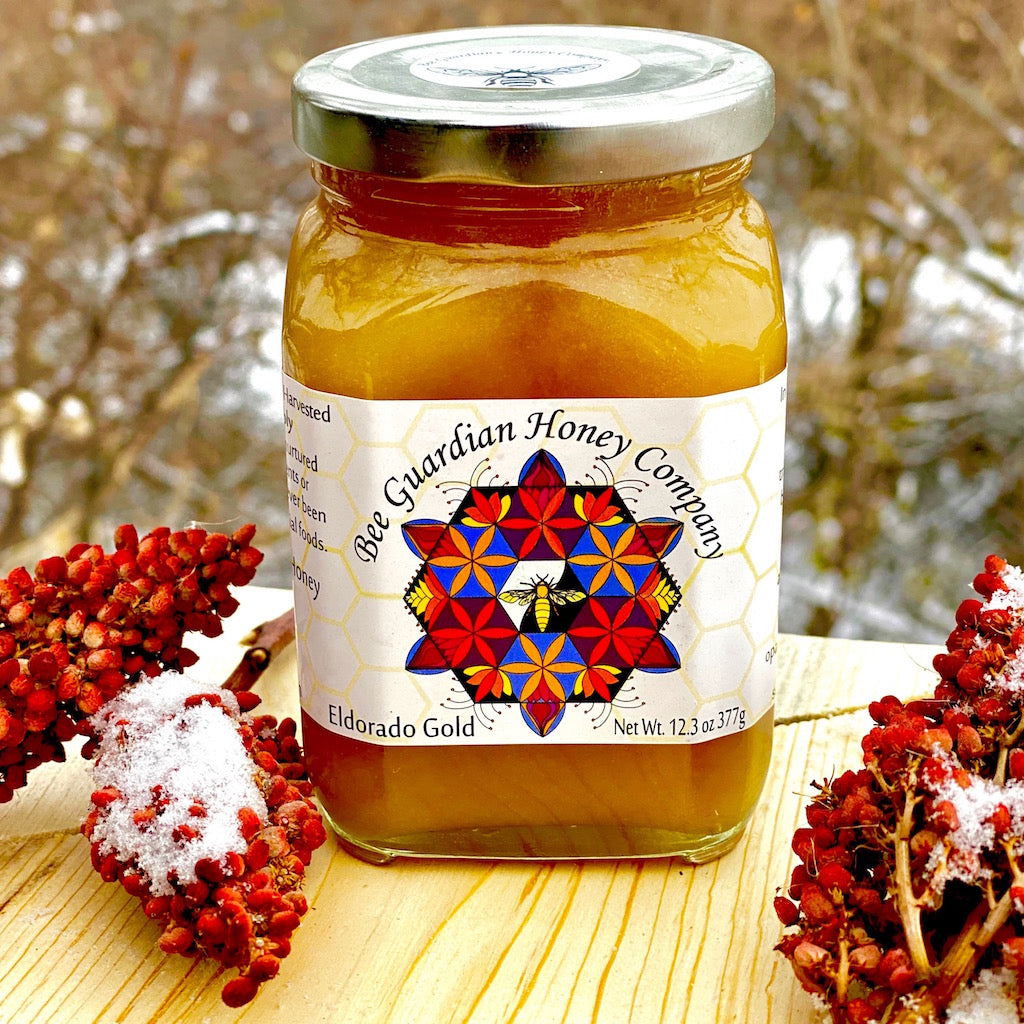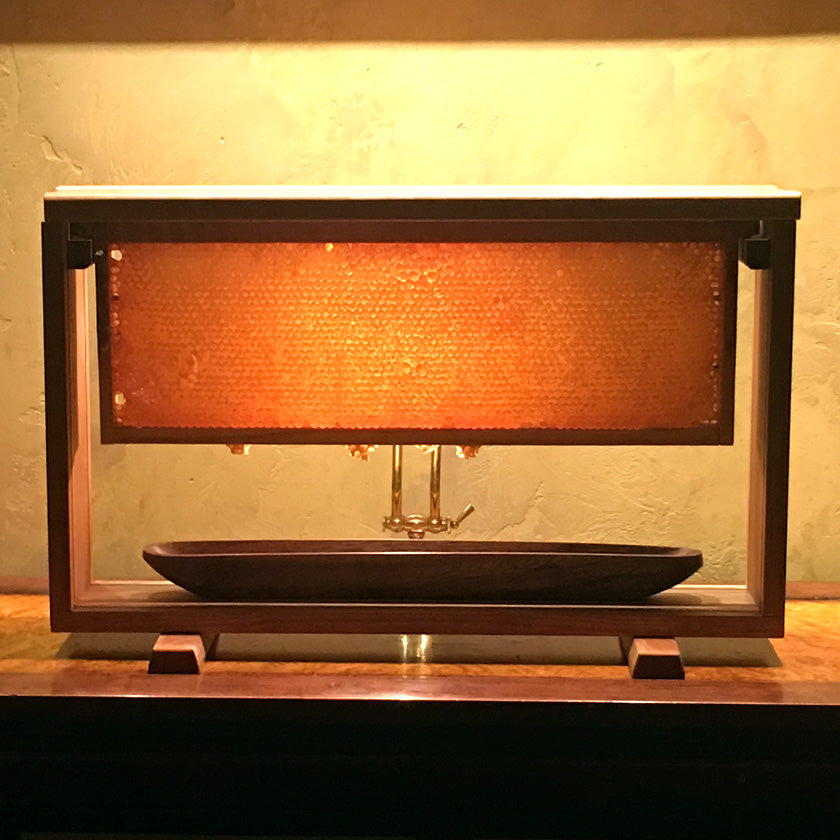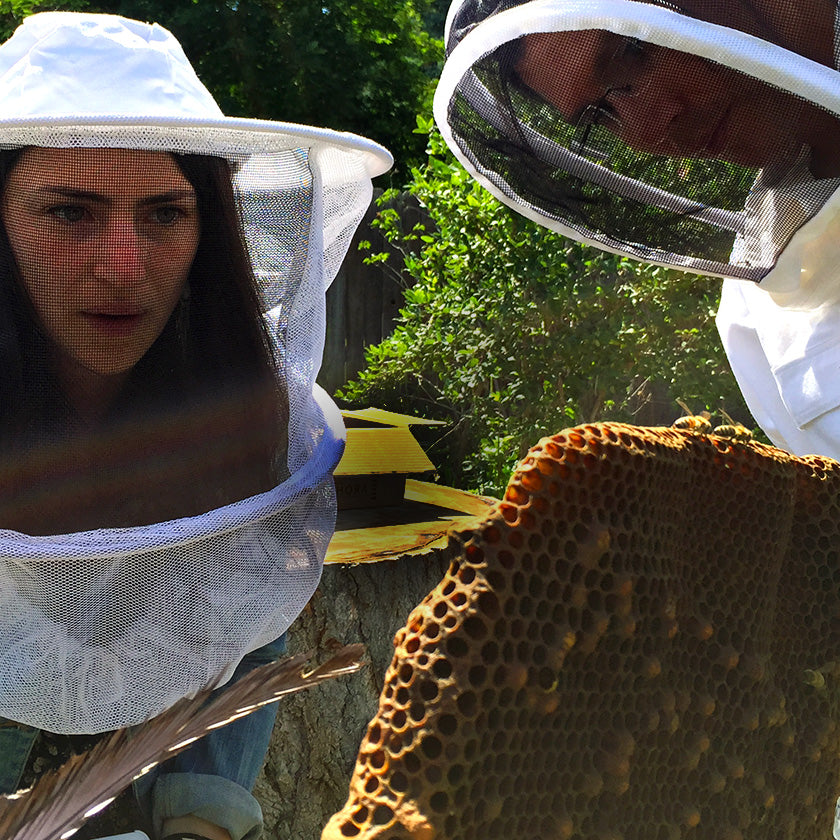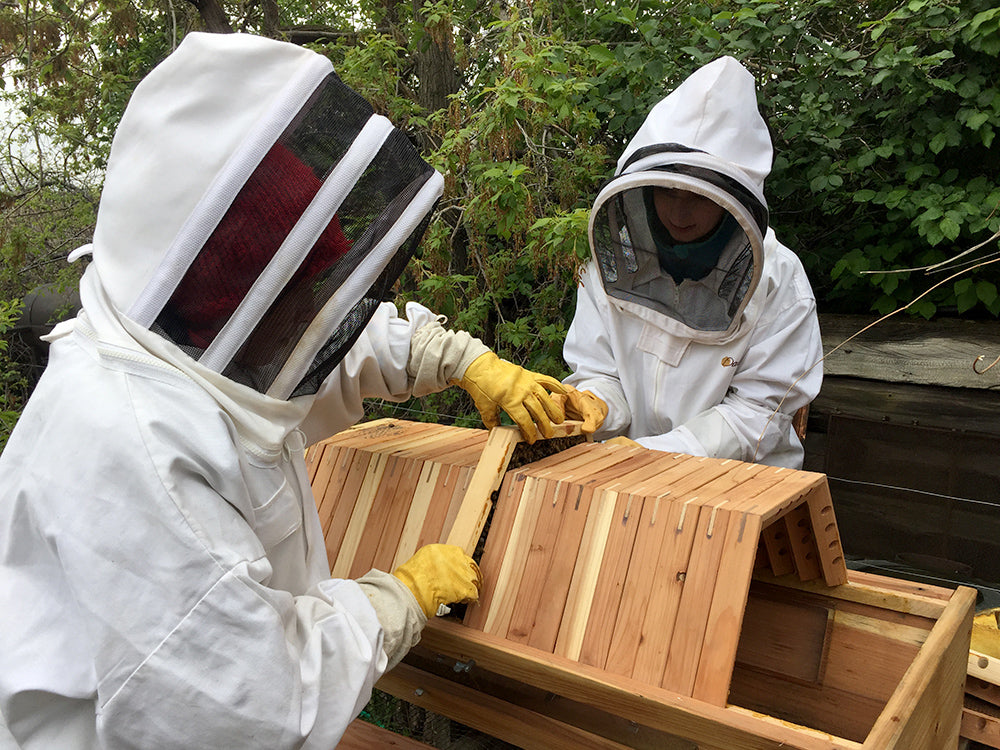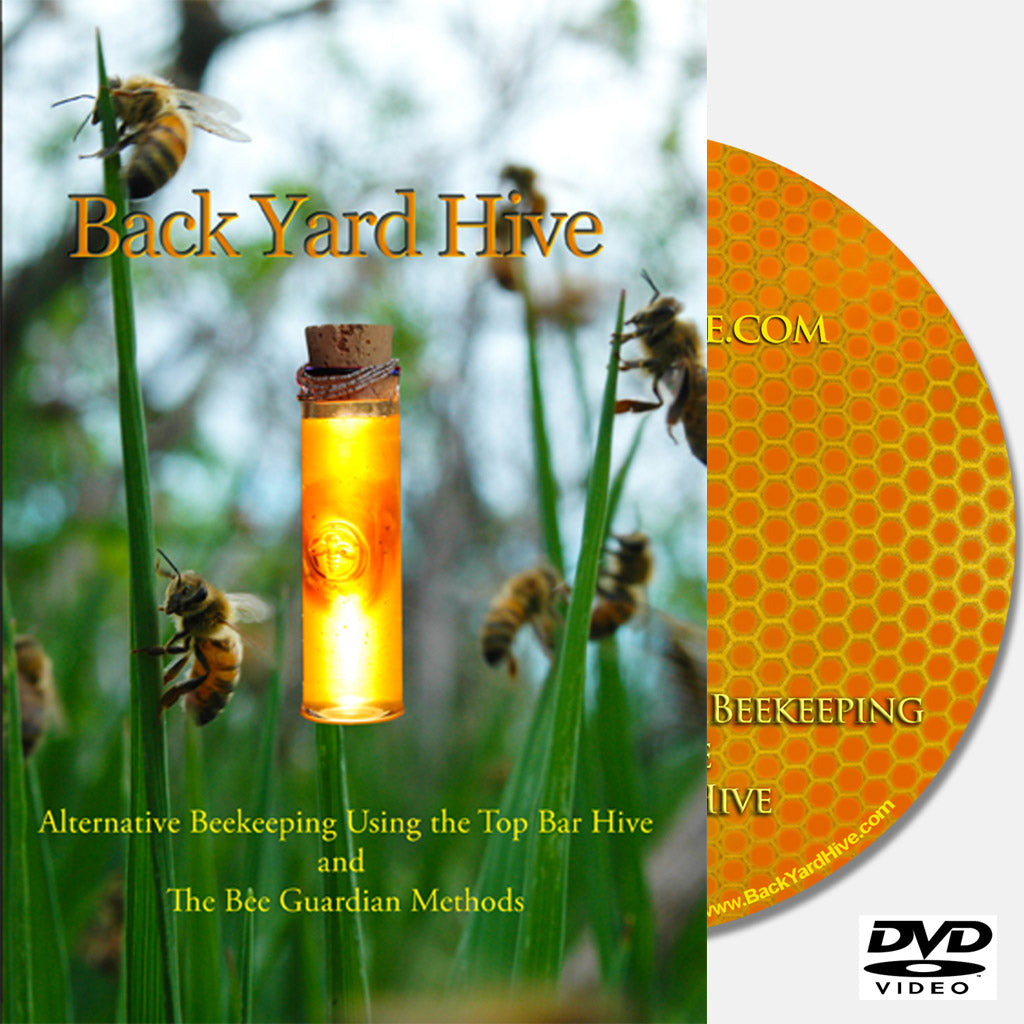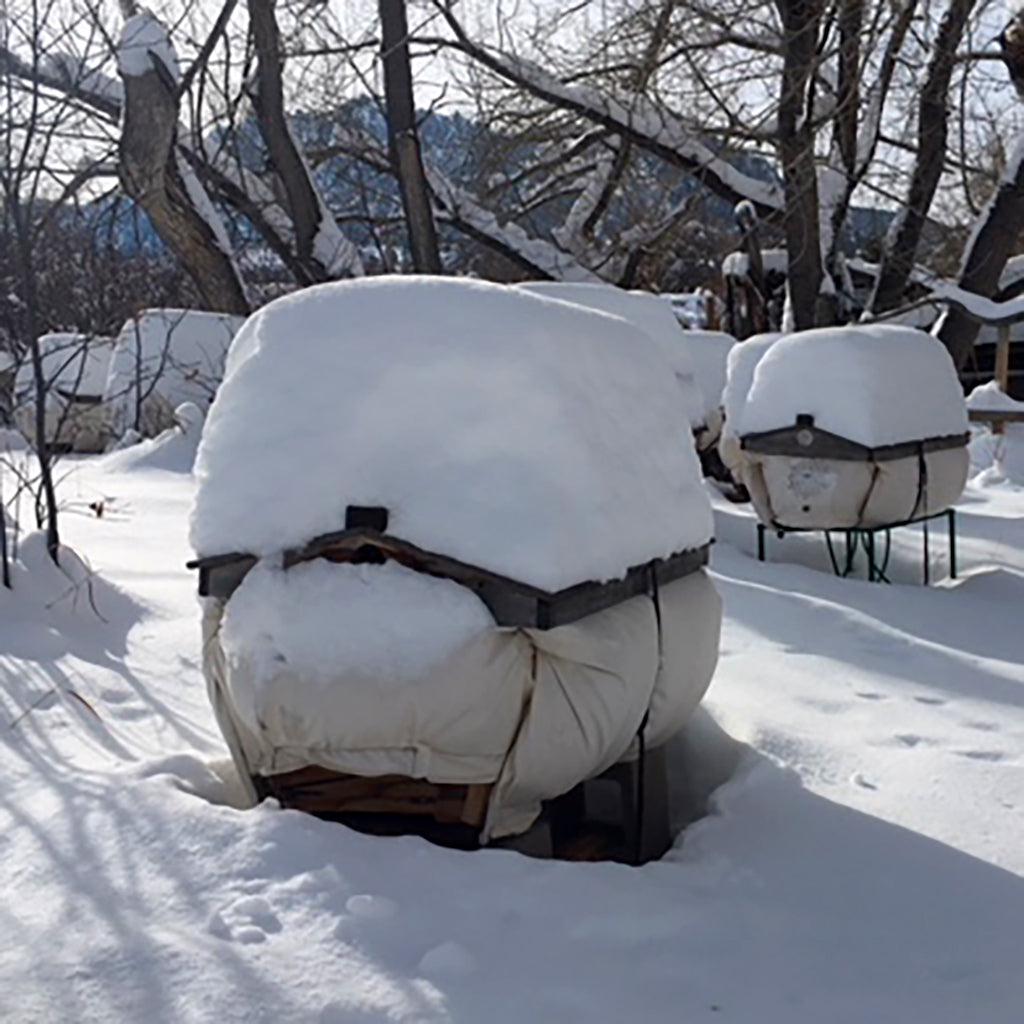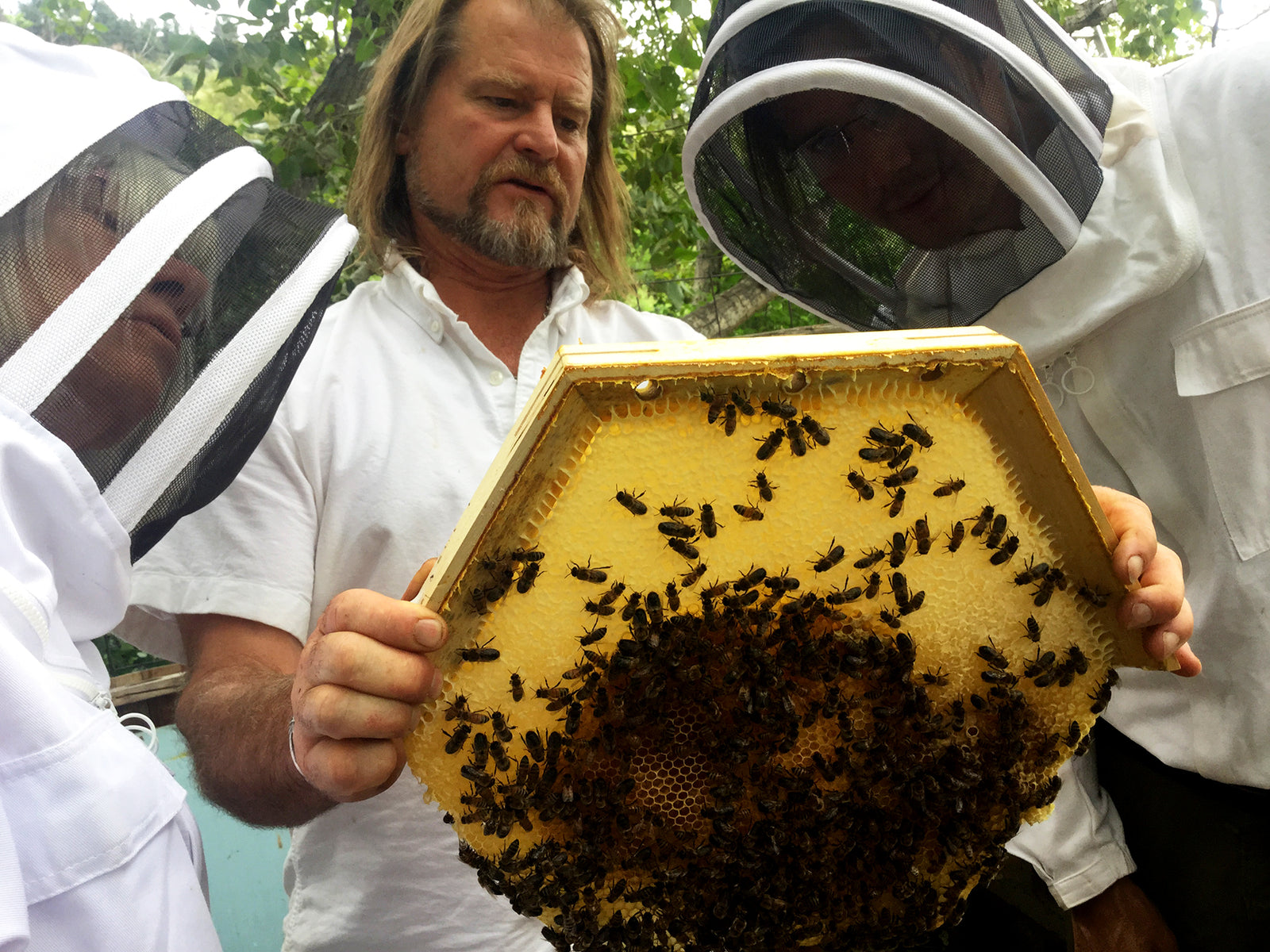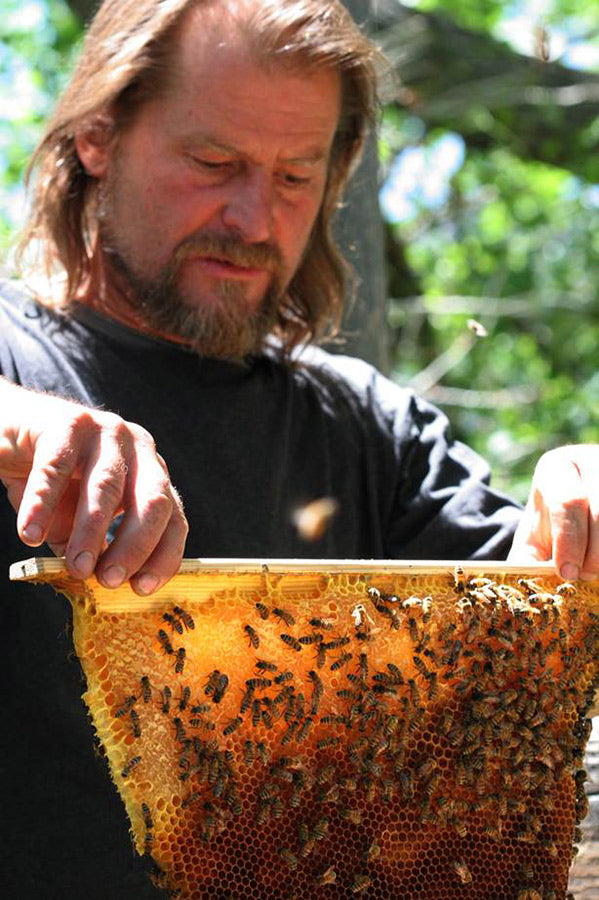All You Need to Know for Winter Feeding
Ideally, in the winter bees will hibernate by forming a ball where they circulate in a "dynamic system", an inter-weaving pattern much like penguins in the antarctic use to keep all the members warm. In a continual flow, the bees on the outside move inward into the center of the ball, and the bees in the center move toward the outside of the ball. If you were to put your hand in the hive in the winter you would find it pretty warm in there. Honey is passed from one bee to the next until all the stomachs are well fed. Their biggest challenge is to slowly move as a ball of bees to a new honey store as the old is depleted.
Of course, this is what they do in nature - some domesticated bees do not display this behavior because their genetics have not been chosen from winter survivor genes. Additionally, some bees are just not from a cold weather region and have never found it necessary to learn the behaviors that ensure winter survival.
So what can we do to help them out? First, you must realize that there is only so much you can do, and beyond that it is between the bees and nature to work it out. So don’t feel that you are neglecting your bees or you did something wrong if they perish. That being said, there are two real dangers for the bees in the winter: extended cold snaps and moisture. While a very cold day is hard, it is actually extended periods of very cold days that pose the greatest threat to bees. These extended cold periods keep the bees from moving to reach the new honey stores. This lack of food not only means hungry bees, but it also means the bees can’t produce the BTUs necessary to keep the hive warm. With moisture, it is normal and good to have some moisture in the hive because the bees can sip the droplets of water when the temperatures are to cold to fly out. But if the hive accumulates too much moisture water droplets can collect on the ceiling and drop icy cold water onto the bees, lowering their body temperatures.

Looking through the window of our top bar hive, combs attached to the side window
This is why I like the glass window - the humidity in the hive condenses on the glass window rather then throughout the hive. Be aware that an excess of moisture can be generated by feeding the bees sugar water.
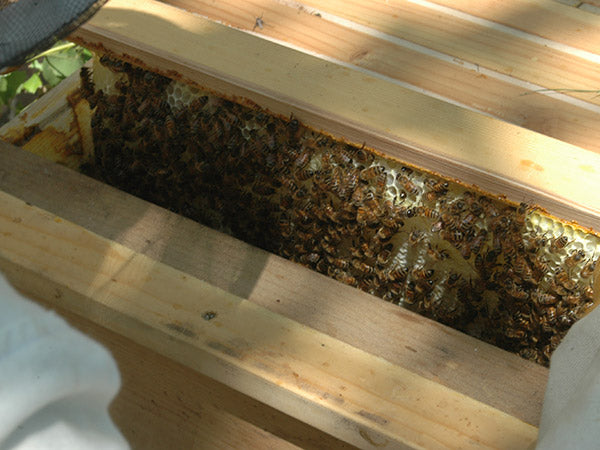
Pulling a comb from the top bar hive
How much honey do the bees need?
We highly suggest that you leave almost all the honey in your hive with the bees to over-winter with, and have your big harvest in the early spring to collect whatever the bees did not use, which can be substantial. In the late summer, it is fine to harvest the last 2 combs that may attach to the false back, but taking any more can weaken your bees’ ability to survive the winter. There are a few different reasons for this besides the obvious fact that they need food.
During the harvest season the bees have carefully selected and collected honey from many plants. This honey has been mixed with the bees’ enzymes and it is crucial that the bees eat this honey in the winter, as it is the food their bodies are designed to digest. Also, they may use honey from different plant sources medicinally if they experience immune weakness in the winter months. Letting the bees live off their own natural food sources ensures that you, as a bee guardian, are encouraging minimal stress in the hive as well as supporting the vitality of the bees.
Honey is not only food for the bees but works as a thermal mass in the hive, insulating the colony from the cold temperatures of winter. Much like a bear who stores up fat for hibernation, the bees store up honey.
What if there isn’t enough honey in my hive for my bees to survive winter?
However, the fact is that sometimes your bees will not able to store enough honey over the summer and you may have to feed your bees during the winter. So it is important to determine in the fall whether or not your bees are going to have enough honey to over-winter. As a general rule, you should consider placing a feeder in the hive for the winter if your hive is only ½ full of comb. To survive our cold winters in Colorado, we’ve noticed that our hives need about 7 honey combs. If the bees have less honey storage than this, we install a feeder cup in the hive.
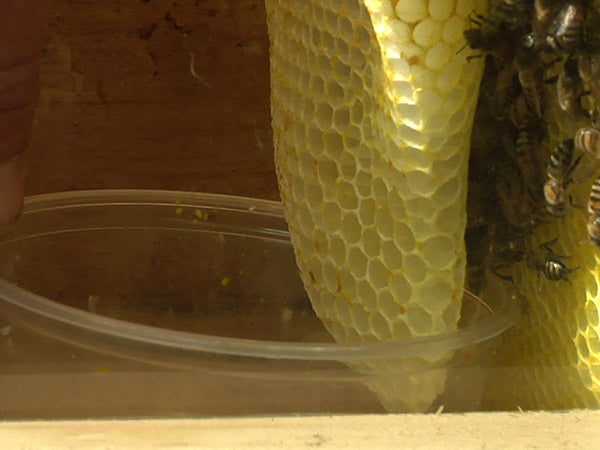
Placing the feeder cup underneath the last comb in the hive for winter feeding
To estimate how many combs in your backyard hive are full of honey, look in the window on the side of your hive to count how many honey comb you see vs. brood comb. The most obvious indication of honey comb is that the combs filled with honey will be attached at the window at a longer area than the lighter weight, but darker in color brood combs.
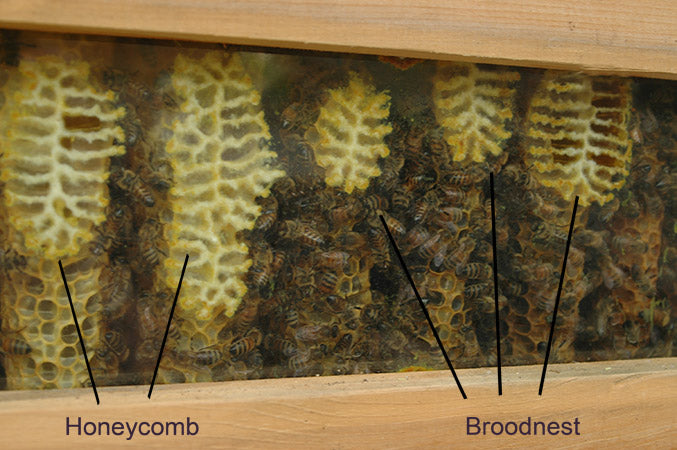
The comb attachments on the window of the hive will indicate how many honeycombs vs broodnest combs are in the hive. Note that the bees will back fill brood combs in the fall.
Now, during the late summer some of the darker colored brood combs may also have been filled with honey as the queen reduced the amount of eggs she lays. These one-time brood cells are now being used as honey storage. So, as you peer in your backyardhive window to determine how many capped honey combs your colony has made be sure to look for both capped honey and how much the comb is attached to the window.
How to install the feeder into your hive
When you begin to prepare your hive for the winter you will want to move the false back forward. This is also a great time to install the honey feeder. We recommend feeding the bees organic honey instead of sugar syrup or sugar water, as sugar is not a natural food for the bees. Get a shallow bowl or container - it can be a plastic container reused from a grocery store purchase. It is important that it is shallow enough to slide under a comb or 3, but deep enough so that you will not have to fill it too often (opening the hive in the winter may dangerously cool the bees). Slide your container under 1-3 combs.
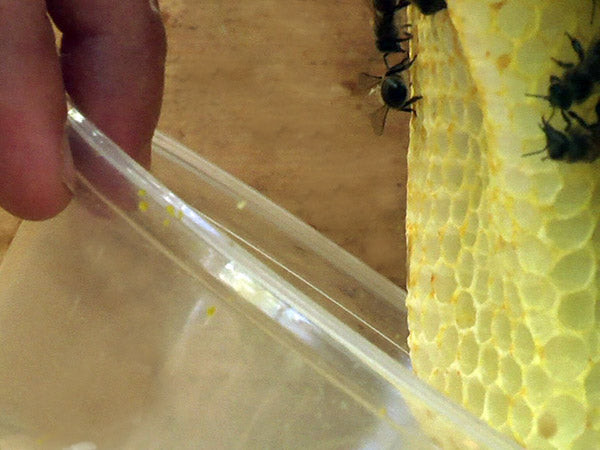
Using a plastic container for the feeder cup underneath the last comb in the hive
This is important, because when the bees are cold they cannot move very fast or far, so their food source needs to be close. Place sticks in the container so that when the bees visit the feeder they will not fall in or drown.

Placing sticks into the feeder cup so the bees don't get stuck in the honey and drown
Besides the combs that the feeder is under, the feeder should stick out 1-2 empty bars or partial combs in the back of the hive. Place your false back as close to the feeder as you can. Mark on the top of the empty or partially-combed top bar that is above where your feeder is located so that during the cold months of the winter if your bees need more honey you can quickly pull off just that one bar, and pour honey into the hive. Remember, you should install the feeder in the fall on a warm day.
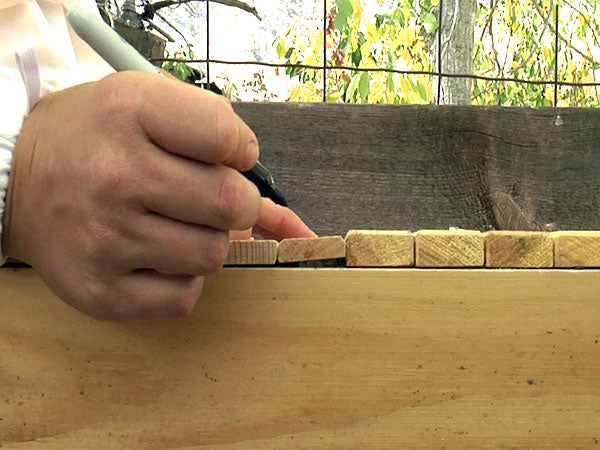
Mark the top bar directly above the feeder cup so you know which bar to loosen when needing to feed and pour honey down into the feeder cup
If the bees are warm enough to be flying from the hive - about 50 degrees - then it is a good time to do the install. Be sure to move quickly so the hive temperature doesn’t drop too much. Great, now we have discussed how to install your feeder.
So when should I start feeding my bees?
Because the day you chose to install your feeder and move the false-back should be a warm day, it may not be the right time to actually pour honey into the feeder. Toward the end of the gathering season, weakened hives may experience a problem with “robbing”. Robbing is when bees from another hive charge through the entrance, pass the guards, and begin to steal honey. Having an open container of honey in a weakened hive may attract this behavior. You can determine robbing behavior by looking in the window. Robbing bees will be seen scurrying along the sides of the glass, moving quickly to the honey stores. There is usually fighting or bees hanging on the legs of intruder bees to remove them. So to prevent this we suggest that you do two things. First, wait to pour honey in the hive until the day before a cold snap since robbing behavior usually stops after the first frost. Secondly, place some twigs or sticks over part of the entrance to reduce the area the bees will have to defend.
See our Article on Robbing Bees
But be careful, if the temperature warms up too much, the bees will have a hard time ventilating the hive so you may need to remove some of the twigs or sticks. If this happens, your hive may acquire too much moisture, which can stress the hive as the temperature drops below freezing. For winter feeding, pour a tiny bit of hot water into the honey to make it less viscous so it pours well. To get the honey into the hive, we suggest using a turkey baster.
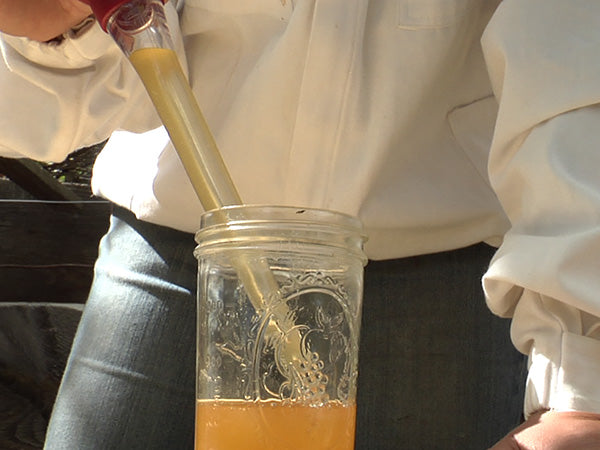
Using a turkey baster to pour the honey into the feeder cup inside the hive
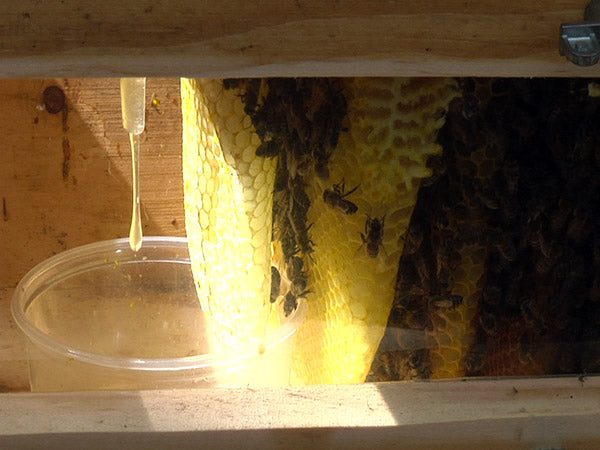
Pouring honey into the feeder cup inside the hive on a warm winter day
Or you can just pour it in if you have really good aim.
If the temperatures drop suddenly and the bees do not reach the supply, you may have to wait until another nice winter day and remove the frozen honey in the dish and start over with warmed honey. Good Luck!


